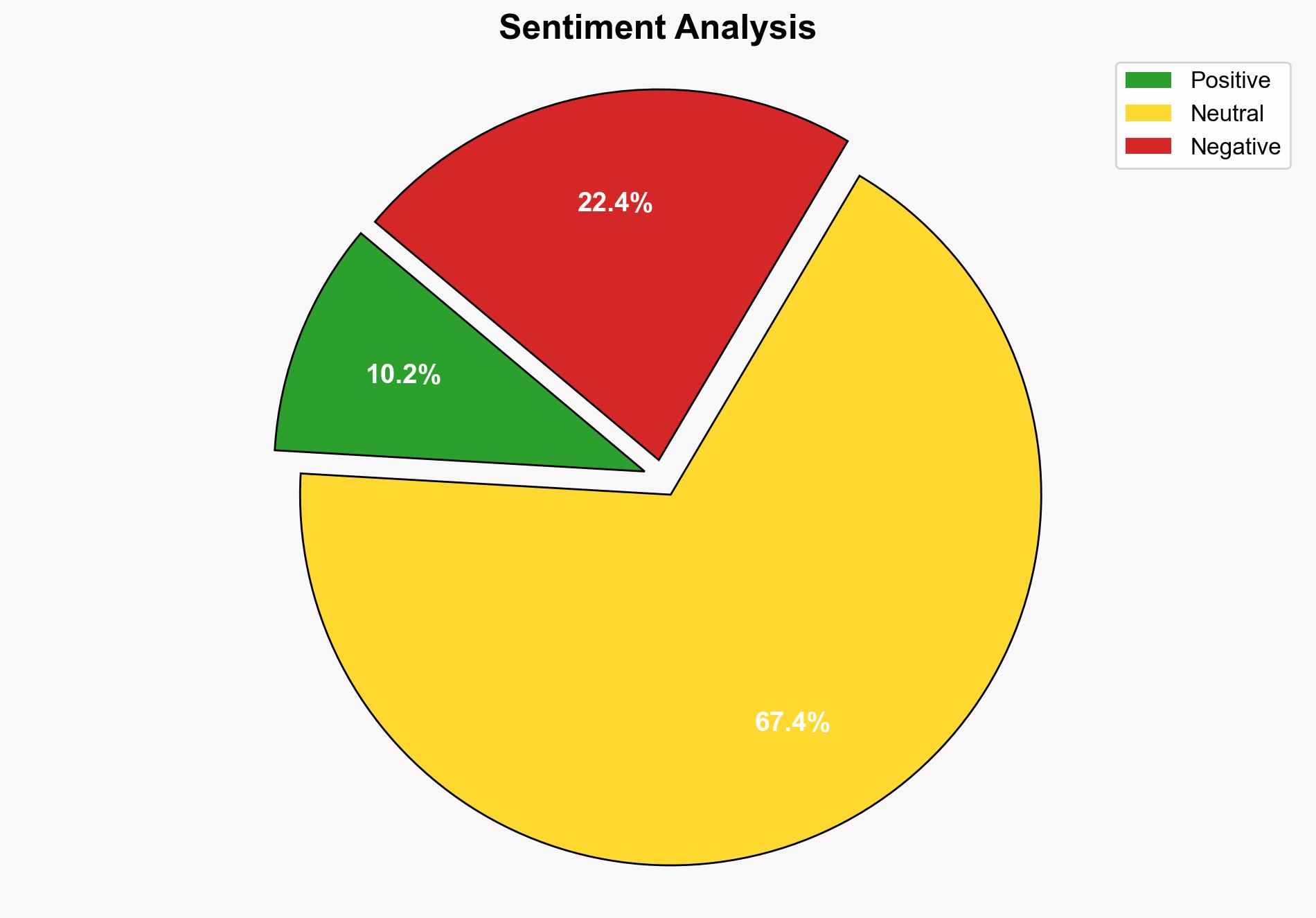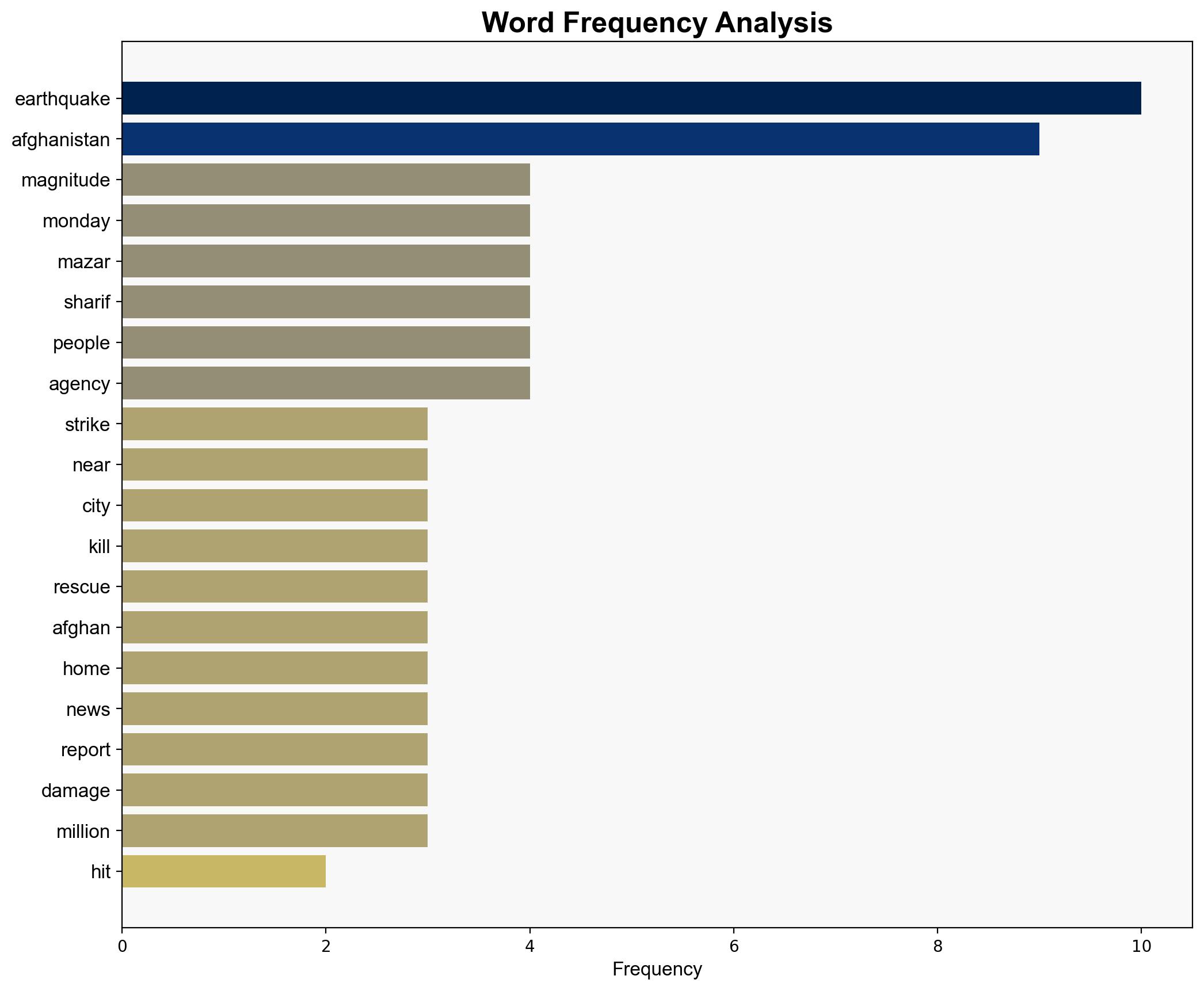Afghanistan hit by deadly magnitude 63 earthquake – DW (English)
Published on: 2025-11-03
Intelligence Report: Afghanistan hit by deadly magnitude 63 earthquake – DW (English)
1. BLUF (Bottom Line Up Front)
The most supported hypothesis is that the earthquake will exacerbate Afghanistan’s existing humanitarian crises, leading to increased instability and potential exploitation by extremist groups. Confidence level: High. Recommended action: Immediate international humanitarian aid and infrastructure support to stabilize the region and prevent further deterioration.
2. Competing Hypotheses
Hypothesis 1: The earthquake will significantly worsen Afghanistan’s humanitarian situation, increasing vulnerability to extremist exploitation.
– **Supporting Evidence:** The earthquake has caused significant casualties and infrastructure damage, as indicated by the USGS orange alert. Afghanistan’s existing challenges, such as poor infrastructure and ongoing crises, amplify the impact.
– **SAT Applied:** Cross-Impact Simulation suggests that increased instability can lead to heightened extremist activities.
Hypothesis 2: The earthquake’s impact will be mitigated by international aid, leading to a stabilization of the region.
– **Supporting Evidence:** Historical precedents where international aid has mitigated disaster impacts. The presence of organizations like the Afghan Red Crescent indicates potential for effective response.
– **SAT Applied:** Bayesian Scenario Modeling shows a lower probability of stabilization without sustained international intervention.
3. Key Assumptions and Red Flags
– **Assumptions:** Both hypotheses assume the earthquake’s impact is severe and that international aid will be forthcoming.
– **Red Flags:** Inconsistent casualty figures and potential underreporting due to remote areas. Lack of detailed information on the response capacity of local authorities.
– **Blind Spots:** Potential for extremist groups to exploit the situation is not fully explored in available data.
4. Implications and Strategic Risks
– **Economic Impact:** Damage to infrastructure will strain Afghanistan’s already fragile economy, potentially increasing dependency on external aid.
– **Geopolitical Risks:** Regional instability could spill over into neighboring countries, affecting broader regional security.
– **Psychological Impact:** Increased fear and uncertainty among the population could lead to social unrest.
5. Recommendations and Outlook
- Immediate deployment of international humanitarian aid to address urgent needs and prevent further casualties.
- Strengthening local infrastructure to withstand future natural disasters.
- Monitoring extremist group activities to prevent exploitation of the crisis.
- Scenario Projections:
- Best Case: Rapid international response stabilizes the region, reducing extremist influence.
- Worst Case: Delayed aid leads to increased instability and extremist activity.
- Most Likely: Mixed response with partial stabilization but ongoing challenges.
6. Key Individuals and Entities
– Afghan Red Crescent
– US Geological Survey (USGS)
– UN Refugee Agency (UNHCR)
7. Thematic Tags
national security threats, humanitarian crisis, regional stability, disaster response





